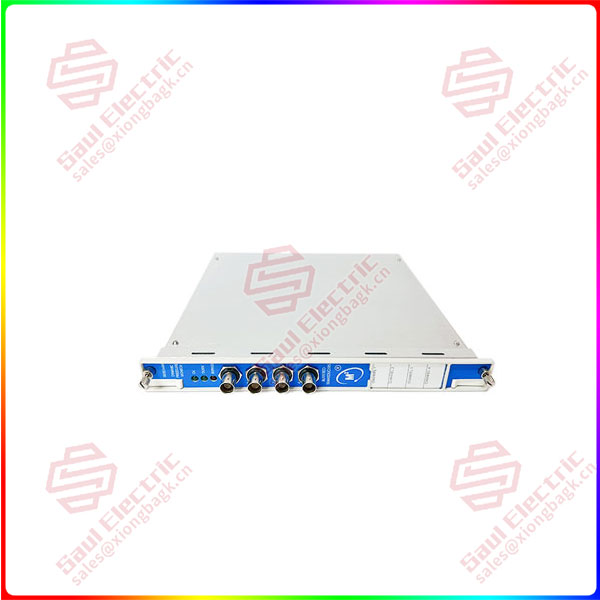Bently Nevada Inc. has introduced a new dynamic pressure monitor 3500/64M, model 176449-05, designed for industrial applications operating in high-temperature environments. This single-slot four-channel monitor is capable of receiving signals from high-temperature pressure transmitters and using these signals to trigger alarms. The primary measured variable for each channel is the bandpass dynamic pressure, and the user can configure the bandpass angular frequency with additional notch filters through 3500 rack configuration software. In addition, the monitor provides a recorder output for control system applications.
The main purpose of the 3500/64M is to provide mechanical protection, drive alarms by continuously comparing monitoring parameters with alarm set points of configuration, and provide necessary machine information to operations and maintenance personnel. Depending on the configuration, each channel can adjust its input signal to generate various parameters called measurement variables, and configure alarm and hazard setpoints for each active measurement variable.

3500/64M 140734-05
The signal conditioning features of the monitor include dynamic pressure with direct filtering and are available in both low and high mode options to suit different signal processing needs. Low mode offers a frequency range of 5 Hz to 4 kHz, which can be extended to about 5.285 kHz if a low-pass filter is not selected. High mode provides fixed low-pass filtering from 10 Hz to 14.75 kHz. In addition, signal processing can be set up so that the monitor only feeds the input signal from channel 1 to ALL four channels, a feature known as Cascade Mode and represented as 1 >ALL in 3500 rack configuration software.
The 3500/64M also features multiple alarm setpoint configurations that enable users to set alarm and danger levels based on values measured directly by the monitor. The alarm can be adjusted from 0 to 100% full scale, and the alarm delay time can be programmed to be set from 1 to 60 seconds in one-second intervals.
The 3500/64M meets several certification and compliance standards, including FCC rules, EMC Directives, Electrical Safety Directives, RoHS Directives, and multiple Marine and hazardous area certifications, ensuring its reliability and safety in diverse industrial environments around the world.
 1 Year Warranty
1 Year Warranty





